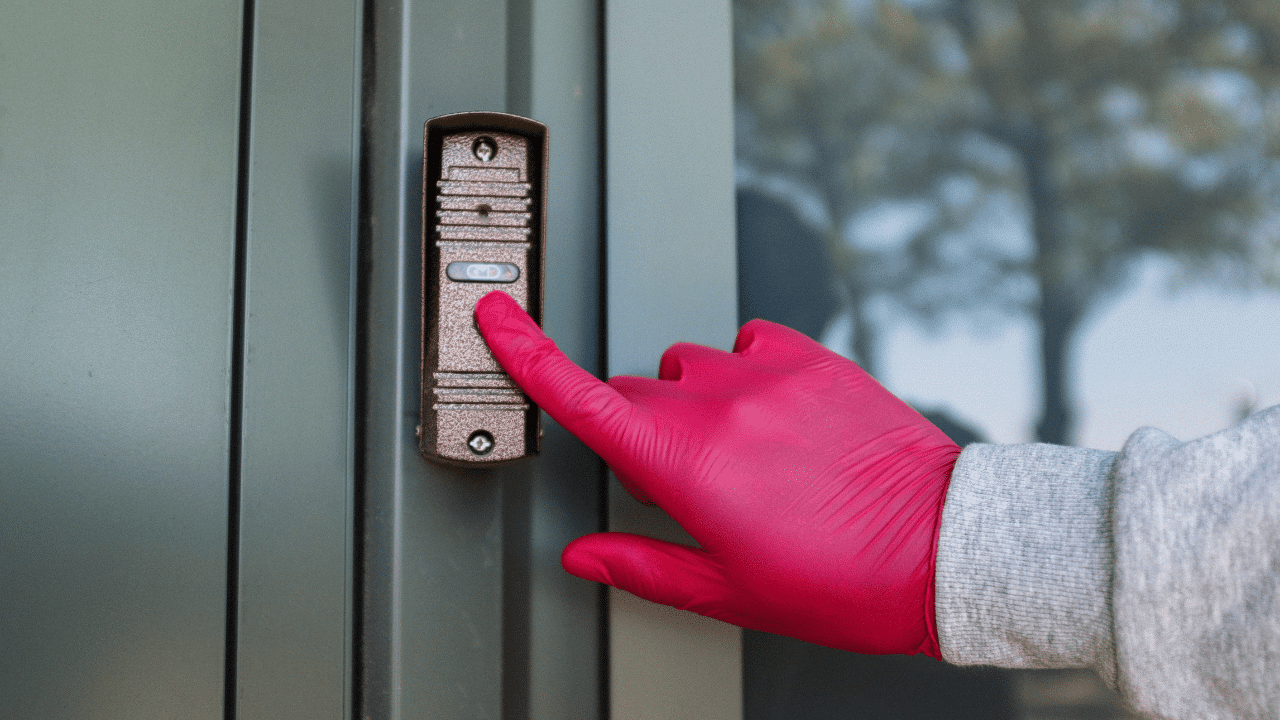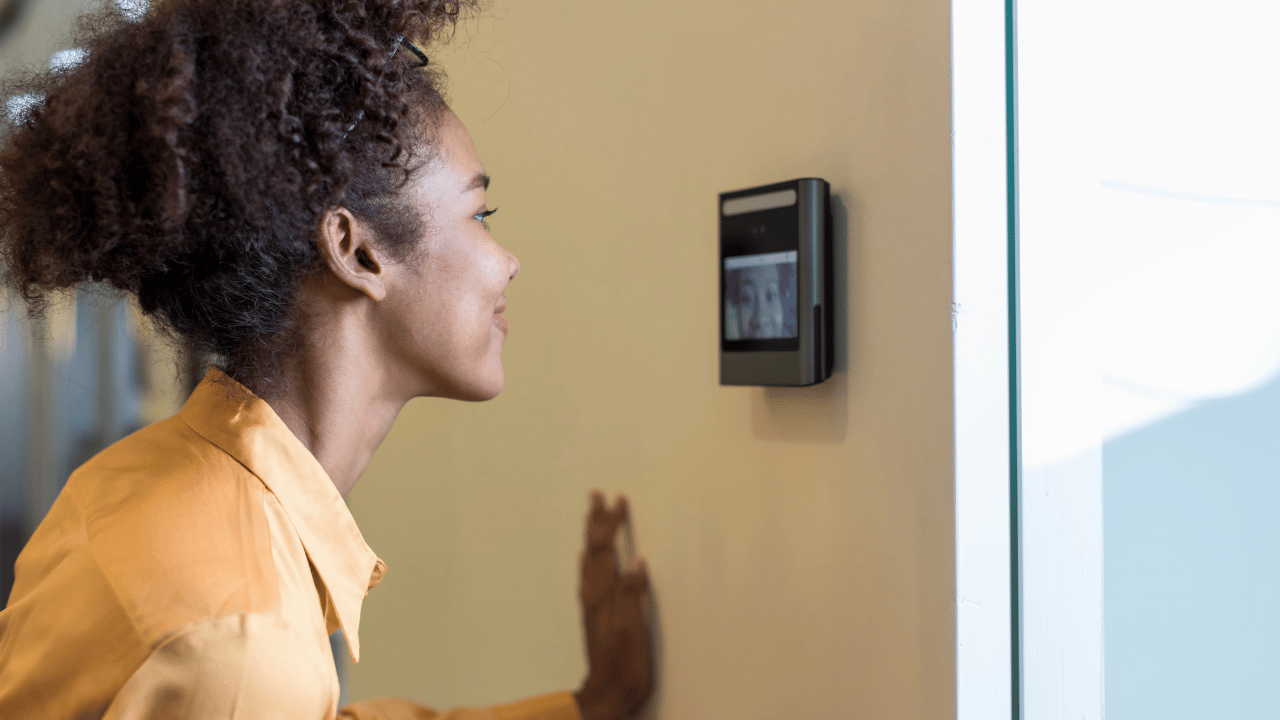Last Updated on September 7, 2023 by Pro Handyman Australia – Editorial Team
Doorbell cameras, though a recent innovation in the realm of home security, have swiftly emerged as a staple in many households. As new models and features flood the market, distinguishing between them to identify the best fit for your home becomes a challenge. Knowledge is power. By comprehending the basic functionalities of a doorbell camera, you not only equip yourself to make an informed decision but also ensure that you extract maximum value from your budget. This guide aspires to be your handbook in this journey, from grasping the nuances of different brands and their offerings to making that final purchase decision.
The Promise of Smart Doorbell Cameras
Gone are the days of wondering who’s knocking at your door. With a smart doorbell camera, be it greeting a guest, instructing the delivery personnel, or simply checking on your kids, you’re always in the know, even when you’re miles away. The inception of these smart devices nearly a decade ago has seen a surge of brands, each competing with distinctive features and price brackets. And for those still contemplating the need for one, a proactive measure can often be the difference in ensuring the safety of your family and property.
Essential Features of a Doorbell Camera

- Resolution: The clarity of the footage your camera captures can range from a basic 480p to a crisp 1080p. While higher resolutions promise sharper images, it’s essential to note that some cameras might falter in adjusting to fluctuating light levels.
- Night Vision: Safety doesn’t clock out after sunset. Ensure your chosen device is equipped with night vision, granting you clarity even in the dark, enhancing your security around the clock.
- Field of View: This refers to the expanse the camera can capture. A 180° view encapsulates everything from the front to the sides, whereas a 90° view is limited. Depending on your home’s layout, a broader view might be more advantageous.
- Motion Detection: Beyond just capturing footage, some doorbell cameras can detect and notify you of movement. Advanced versions even let you select specific zones for monitoring, effectively eliminating unnecessary alerts from high-traffic areas.
- Power Source: These cameras can either run on batteries or be hardwired using your traditional doorbell’s existing setup. If your residence lacks a standard doorbell, consider opting for a battery-powered model.
- Audio Features: Engage in two-way conversations via your doorbell camera. This feature proves beneficial, especially when guiding visitors or delivery personnel.
- Cloud Storage: Secure a backup of your camera’s recordings on the cloud. This feature ensures you retain footage for up to a month, crucial in instances requiring evidence.
- App Support: Seamless app integration is paramount. After all, a swift and efficient app enhances your ability to promptly respond to visitors or potential threats.
With this guide as your companion, embark on your journey towards enhanced home security, ensuring peace of mind for you and your loved ones.
Home Ownership and Security
Owning a home is more than just a possession; it’s a responsibility. One critical aspect of this responsibility is ensuring the safety and protection of your home, loved ones, and valuables. While there are several security measures available, a prevalent choice is the doorbell camera. Depending on your home’s nature and your living situation, the best doorbell camera system for you might vary.
Selecting the Right Doorbell Camera: Homeowner vs. Renter

- Homeowners’ Perspective: As a homeowner, you have a wide array of options available when it comes to doorbell cameras. You can choose from either wired or wireless systems based on your preferences. Moreover, since it’s your property, there are no constraints on installation, be it drilling or wiring. Your primary focus should be on the features, equipment quality, and the desired functionalities of the camera.
- Renters’ Considerations: Renting a place narrows down your choices mainly to wireless doorbell cameras, unless your landlord provides written permission for a wired installation. It might be worthwhile to approach your landlord to install one, especially if you plan to extend your lease or if the area has security concerns. Wireless options are preferable for renters, given their non-intrusive installation methods, ensuring no potential damage or alterations to the property.
Assessing Compatibility
Before making a hasty decision, it’s vital to evaluate whether the chosen doorbell camera will be compatible with your home and any existing security setups. Consideration should be given to compatibility with current home security equipment and the broader objectives you hope to achieve with the system. Broadly, doorbell cameras are categorized into wireless and hardwired systems.
- Wireless Doorbell Cameras: Powered typically by batteries, wireless cameras offer the advantage of portability and ease of installation. They often boast features like multiple chime options, sirens, two-way communication, video recording, and night vision.
- Hardwired Doorbell Cameras: Hardwired systems require a connection to existing doorbell wiring. Their installation can be complex, especially if a traditional doorbell setup isn’t present. In such cases, professional installation might be necessary. However, their performance and consistency can be worth the effort.
Integration with Home Automation
In today’s digital age, home automation has made life more efficient and convenient. Many doorbell cameras can be integrated with existing home automation systems, enhancing their utility. If you aim for such integration, ensure that the camera is compatible with your current home automation setup. Different doorbell camera brands offer varied compatibility with platforms like Apple HomeKit, Alexa, Google Assistant, Nest, etc.
Considering the Costs
Your budget will significantly influence your choice. Determining the amount you are willing to invest, the features you deem essential, and the potential additional costs for extras is crucial. While price ranges vary, most doorbell camera systems typically fall within the $100-$250 range.
Prioritizing Features
It’s essential to be informed about the various features available to make a wise choice that aligns with your needs and budget. Some key features include:
Resolution
Ranging from 480p to 1080p, higher resolutions provide clearer images. Some cameras are also better equipped to adjust to fluctuating light conditions, ensuring clarity both day and night.
Mobile Alerts and Remote Access
Stay connected wherever you go with doorbell cameras that provide mobile app integration. These apps grant you instant, real-time access to your system. Upon detecting any activity, they promptly notify you, enabling you to assess the situation and take the necessary steps. Ensure the mobile app is reliable and user-friendly, avoiding those which are prone to glitches or delayed notifications.
Warranty: Ensuring Product Reliability
Video doorbell cameras come with various warranty durations and conditions. Commonly, systems include a one-, two-, or three-year limited warranty. Some manufacturers express confidence in their product by offering customer satisfaction guarantees, replacement provisions in case of theft, or even limited-lifetime warranties. As you compare products, factor in the warranty to ensure you get the best value for your investment.
Night Vision: Enhanced Security After Dark
Night vision is an essential feature in video doorbell cameras. It allows clarity not only during nighttime but also during cloudy days, under dense foliage, or in shaded areas. A higher resolution provides better visibility across varying conditions. Additionally, consider if the doorbell camera integrates seamlessly with other smart home features like timed lighting systems.
Motion Detection: Intelligent Alerts
The motion detection capability is at the heart of doorbell cameras. Beyond merely notifying you of activity, advanced systems can be tailored to monitor specific zones, preventing unnecessary alerts from passing vehicles or pedestrians. State-of-the-art cameras can also differentiate between humans, pets, and inanimate objects, ensuring you’re alerted to truly significant events.
Weather Resistance: Built to Last
Before finalizing your purchase, evaluate the camera’s resilience to extreme weather conditions. A high-quality video doorbell camera should endure heavy rainfall, snow, gusty winds, freezing conditions, and other environmental challenges. Ensure that the installation hardware is equally durable.
Live View: Immediate Visual Access
Many doorbell cameras offer real-time video streaming. When motion is detected, you’ll not only get an alert but also a live video feed, empowering you to decide the next course of action, whether it’s a simple two-way conversation, sounding a siren, or alerting authorities.
Two-Way Audio: Communication at Your Fingertips
After being alerted, a two-way audio feature lets you communicate directly with the individual at your door. This feature, standard in many models, can also be paired with sirens for added security. Some advanced models even provide pre-recorded messages for various scenarios, offering an added layer of deterrence for unwanted visitors.
Picture Capabilities: Expansive Field of View
When choosing a doorbell camera, the field of view is paramount. While a 90° angle provides a frontal view, a 180° view offers a more expansive perspective. This broader view is crucial for capturing activity from all angles, as intruders often have knowledge about the limitations of security cameras.
Recording Options: Keeping an Eye on History
Doorbell cameras vary in their recording mechanisms. Some provide continuous video recording (CVR), others are activated only upon detecting motion, and a few might overwrite old clips. Additionally, some cameras capture both video and audio, providing a comprehensive record of events.
Continuous video recording is recommended for those who want an extensive archive of events, allowing for a detailed examination of incidents. This can prove invaluable in resolving any potential disputes or incidents.
Storage Solutions: Where Your Data Lives

Doorbell cameras typically come with built-in storage options. Understanding these options is vital to ensure you choose a system that aligns with your needs.
- Local Storage: Cameras might feature internal storage or offer storage via a microSD card, ranging between 16GB to 128GB. While local storage offers control and privacy, one needs to manage storage limits manually. Continuous or event-based recording preferences can be set via the app, and once the storage is full, older recordings might be overwritten.
- Cloud Storage: A more hands-off approach, cloud storage often comes with a recurring fee based on the storage volume and duration. It allows for easy access and management of recordings, though there may be potential privacy concerns as the data is stored off-site on remote servers.
Choosing between local and cloud storage entails evaluating your storage needs, budget constraints, and privacy preferences.
Conclusion
In today’s digital era, enhancing home security is no longer limited to just traditional alarm systems and CCTV cameras. The rise of smart doorbells has revolutionized the way we monitor our homes, offering real-time insights and interactive features right at our fingertips. Whether it’s remote accessibility, motion detection, or two-way communication, these devices encapsulate modern-day needs with remarkable efficiency. This comprehensive guide aims to shed light on the myriad of features and considerations essential for potential buyers. From understanding storage options to appreciating the nuances of night vision and weather resistance, making an informed decision ensures that your chosen smart doorbell aligns perfectly with your security needs and lifestyle. In essence, a smart doorbell isn’t just a mere doorbell; it’s a gateway to a safer, smarter, and more connected living experience.
